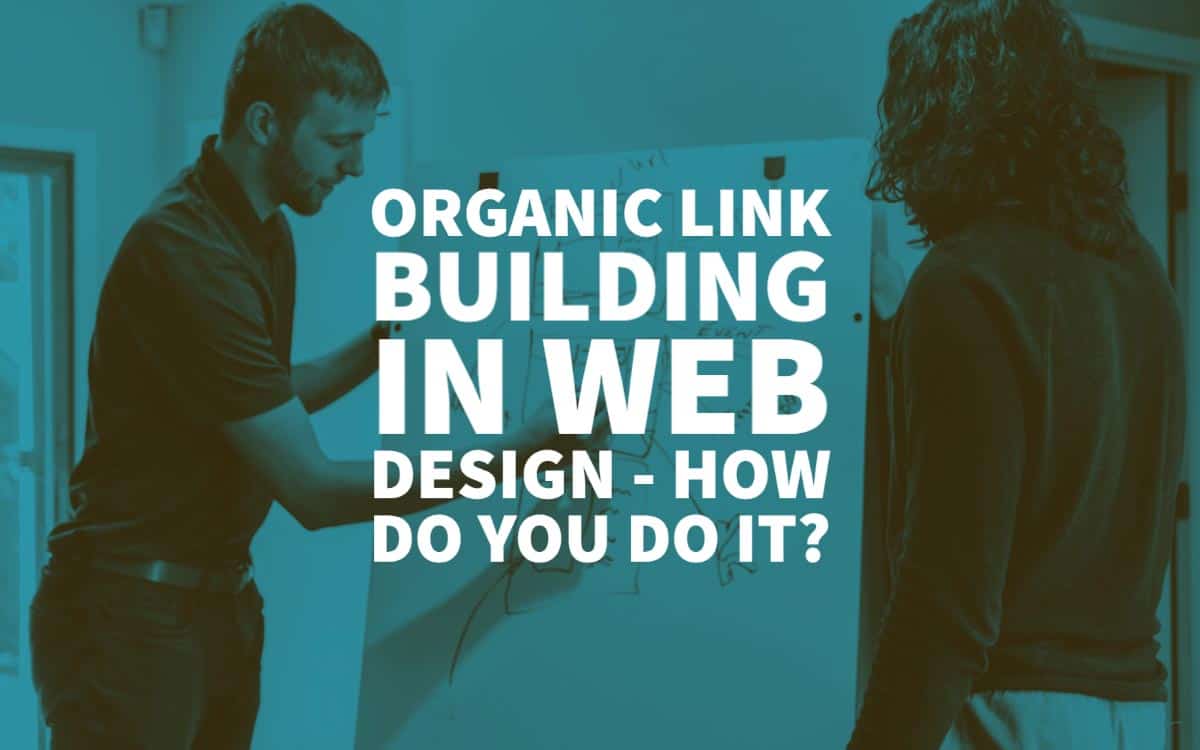
06 May Organic Link Building in Web Design – How Do You Do It?
Organic Link Building in Web Design – How Do You Do It?
Brands treat their websites in the same way influencers treat their profile pictures – they’re a pretty huge deal. Much in the same way a profile picture can tell whether an influencer is worth the follow or just “faking it,” a brand’s website is a testament to its place in its branding.
Can we consider this brand reputable? Can we call this brand sophisticated? Can we say this brand is approachable? We can say the way people see our brand depends hugely on the way we present ourselves online – and if our web design doesn’t look right, it’s very likely for our viewers to turn away from us. And if we’re talking about digital marketing, this means losses in our leads, our conversions, our sales, and even our backlinks.
How do we solve this, in any case? Perhaps instead of just looking at our website design from an aesthetic perspective, we’ve got to look at it from a link building perspective, too. Organic link building can help give our web design that much-needed “wow” factor to attract not just readers and leads, but also backlinks.
What’s Organic Link Building?

Organic link building is very similar to link building, except this time, we focus on finding ways to attain backlinks “organically” or “naturally.” This means our methods have to revolve around creating content that can naturally find themselves in niche communities and groups, as well as the sights of modern SEO algorithms. This sounds a bit overwhelming at first, but successful link building strategies can also be considered organic link building.
Many digital marketing approaches involve organic link building. This is why a link building agency would assess their clients by observing not just their content, but also their overall web design and branding. It’s through this that they can help clients attain natural and organic links by creating content that depends on context instead of just keywords, as well as the value they can provide to the industry. They also make sure clients are networked with blogs, brands, and other niche personalities that can naturally find their content useful.
Organic Link Building in Web Design: Practical Tips

With the definition of link building in mind, here are some practical organic link building tips you can apply to your web design:
- Make sure your website supports quality content. Before you begin your link building journey, you’ve got to make sure your website has excellent content, to start with. What do we mean when we say “great content,” though? In the context of content marketing, this means creating content that’s not just riddled with keywords but is rather organically and naturally written based on the context of the topic and what it can contribute to the niche. From a web design standpoint, this means you should make sure your content – both previous and current releases – is supported by your website.
- Instead of riddling your website with spammy keywords, focus on building evergreen content. In the context of organic link building, this means creating content that’s not just fit for a particular period, but is useful for anyone looking for your content at any time. This is why context matters, as writing articles based on context and not just keywords allows you to tackle various subjects in your niche without restricting yourself with what you can write.
- Excellent web design is useless if you’re not presenting viewers with great content. This is why link building should always start after you’ve written relevant and timely content. That’s because link building only brings people to your website, but not necessarily to stay there. Your content will help push them to stay on your site longer, while your web design makes sure they have a comfy experience. This is why brands such as Apple maintain a significant presence in the tech niche – because part of its brand development is supplementing its popular brand offerings with blog posts that regularly connect their products with trends and news today.
- Always make it a point to update your content based on changes to your website. When your website has changes related to design, make sure you check your content to make sure it’s still appropriately presented. This makes it easier for viewers to read, and ensures that all processes involved in the customer journey aren’t hindered by bad UI or UX. Great reminders include making sure your images are compressed to save space and decrease loading time, and to make sure your blogs and content are viewable on mobile.

- Make your website branding consistent with all your other pages. One element we shouldn’t forget as web designers is to make sure we maintain a uniform “appearance” throughout our content platforms. This means we have to apply branding elements in our website to our social media pages and other forums, and vice versa. This might appear like a small deal, but this does help with brand recognition, especially if we’re a smaller brand that wants to get known in our particular niche. Having a consistent brand visual will also make it much easier for you to consider applying or removing design elements.
- Make sure your social media pages and your website are linked to one another. When making any page in your site – be it a blog or an actual internal page – make sure you have clickable buttons that will lead people back to your social media accounts. Likewise, make sure your social media accounts also mention your leading site, be it when you share content or when you make your posts. Establishing a consistent pattern across your website and brand elements are essential, as 75-percent of your site’s credibility does come from your overall design.
- When you link your content channels with one another, it makes it much easier for search engines to crawl and associate your content with the channels you’ve connected. Think of this as making interconnected “links” that eventually lead back to your website. When you share your content in social media and lead them back to your website, this is an excellent example of organic link building as you naturally mention your topic and your niche without spamming your keywords.
- In the above example, McDonald’s uses its iconic red and yellow colour scheme across all of its pages. The dominant golden arches are also made sure to be present in the material that can be seen firsthand in their pages. An added plus is that their current branding campaigns also remain consistent throughout their pages. As of writing, McDonald’s has a Kindness Kitchen and “Thank You, Frontliners” campaign to show solidarity with the COVID-19 effort.

- Make sure your content branding is the same as with brand image. Building upon the above suggestion, we also have to make sure that the content we release is consistent with the brand imagery we have on our website and our social media pages. As mentioned previously, great link building and great web design won’t be useful if we can’t retain people in our websites with our content. This means a huge deal of our web design has to do with presenting our content offerings and features in the best way possible.
- When we say content, we don’t just mean our blogs. We’re talking about other features that can have an impact on the way search engines and viewers see the brand. These include our blog posts, forums, and even our eCommerce offerings. We need to make sure these are presented with the elements dominant in our branding, so our viewers can recognise our company.
- Presenting these methods accurately and efficiently for your audience can add a considerable bonus to search engine scores. That’s because organic link building also has to do with making sure your website is optimised correctly to look at and view your content. For eCommerce platforms, this means making sure your website listings are viewable on both desktop and mobile, and that your other website features work seamlessly across different devices. This is important, as 93-percent of people left sites because they’re not optimised for their devices, with more than 90-percent also going because of bad design and slow loading times.
- In the above example, Shopee, a Manila-based eCommerce platform, has a dominant orange and blue colour scheme present in its blog (left), and advertisements (superimposed on the leading site on the right). They also use the main font consistent throughout their materials. This presentation makes Shopee a recognisable eCommerce brand for the Philippines and its international sellers.
Organic Link Building and Web Design: It’s All in the Approach
Let’s look at the bright side, though – just because there’s a bit of pressure with the way our web design works doesn’t mean we can’t pull it off. This simply means we have to take a little extra precaution to make sure our website doesn’t just look good. Instead, we need to make sure our site is equipped with the means to attain audiences, make sure they get exposed to our content correctly, and that they share our content. And we can pull off this successful web design approach through the help of organic link building.
Hopefully, the tips above were able to give you some insights as to how you can approach your web design strategy and apply the appropriate link building strategies to provide it with that “boost” it needs to be extra attractive to audiences. And if you have other tips and tricks to share, please feel free to share them with us below!
Top 10 Books on Organic Link Building
Last update on 2020-05-07 / Affiliate links / Images from Amazon Product Advertising API



